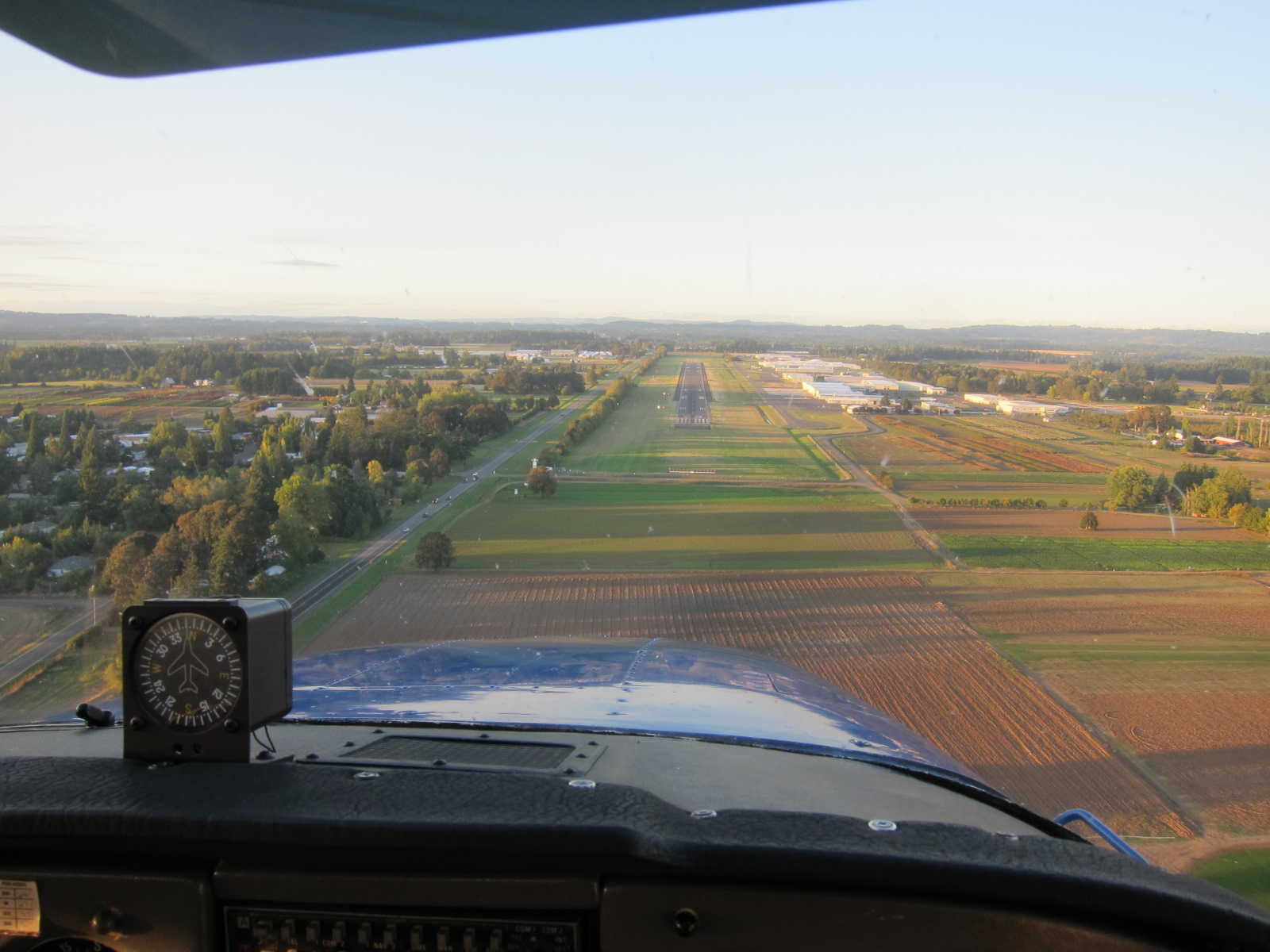-
Much Better

 Unlike my flight last Thursday, yesterday’s flight was fantastic. Even though I didn’t land as perfect as I would have liked, I did have a better experience learning how to land better and was quite happy with my pattern work.
Unlike my flight last Thursday, yesterday’s flight was fantastic. Even though I didn’t land as perfect as I would have liked, I did have a better experience learning how to land better and was quite happy with my pattern work.My day, like most, began with a bit of ground schooling. We went over the engine of the plane I’m flying. The engine for the plane is a reciprocating engine. This engine, a lot like a car engine, is a four-stroke engine. The cylinder goes through four-strokes before finishing a cycle.

- Intake – this brings in the fuel/air mixture.
- Compression – this compresses the mixture to create a greater power when ignited
- Power – this causes a tremendous pressure increase in the cylinder and forces the piston away creating the power that turns the crankshaft (to turn the prop)
- Exhaust – this purges the burned gases and materials out of the cylinder.
When this finishes, the cycle continues back at step one. This cycle occurs hundreds of times a minute allowing for a steady and unnoticeable flow.
The engine we’re flying has four cylinders with two on each side of the crankshaft allowing for the plan to stay balanced.
On top of this we went over the carburetor which is important since it is what controls the flow of our air/fuel mixture. We control the flow through the carburetor using the throttle and the mixture control.
Important to keep in mind about the carburetor is that it can freeze. In fact, it can freeze even when it is nice and sunny out. The reason for this is the pressure of air being pulled through the carburetor. To counter this we use our carburetor heat when descending to allow for the carburetor to not freeze over.
Up In The Air
While flying, we went over some Power-Off stalls. I’m doing much better at these, but still needing some work. I do feel however a lot better with my slow flight maneuvering.
After stalls we went to Aurora State Airport for some landing practice. The practice was very helpful as I was able to fix a number of the issues I dealt with on Thursday. I’m also making more sense of the speeds I need to be at when getting to land. Finishing my downwind around 85 KIAS, then getting to 75 KIAS in the Base and following up this into final around 65 KIAS all while taking the flaps out when need be and paying attention to my altitude.
 I feel overall that my flight was really great and that I learned quite a lot during this lesson. This Thursday (tomorrow), I’ll have my last flight before James leaves for ten days. This means that I’ll be practicing with another instructor and very soon taking my first solo. How awesome is that!
I feel overall that my flight was really great and that I learned quite a lot during this lesson. This Thursday (tomorrow), I’ll have my last flight before James leaves for ten days. This means that I’ll be practicing with another instructor and very soon taking my first solo. How awesome is that!Logs
Total Flight Time: 12.6 Hours
Total Ground Time: 4.0 Hours
Total IFR Time: 0.4 HoursRelated
September 29, 2010 / Jason / Comments Off on Much Better
Categories: Private Pilot Completion
Tags: Cessna 172, flying, James, K7Se, KUAO, Maneuvers, schedule, Stalls
Logbook
- Total Flight Time: 318.5 Hours
- Pilot In Command Time: 224.7 Hours
- Solo Time: 300.6 Hours
- >50NM Cross Country Time: 95.2 Hours
- >50NM Cross Country Time (Solo): 62.5 Hours
- Night Time: 8.5 Hours
- Simulated Instrument Time: 4.8 Hours
- Landings (Day/Night): 617 (593/24)
- Flight Training Received: 92.8 Hours
- Ground Training Received: 30.8 Hours
Updated 5/2/2019
Comments are currently closed.